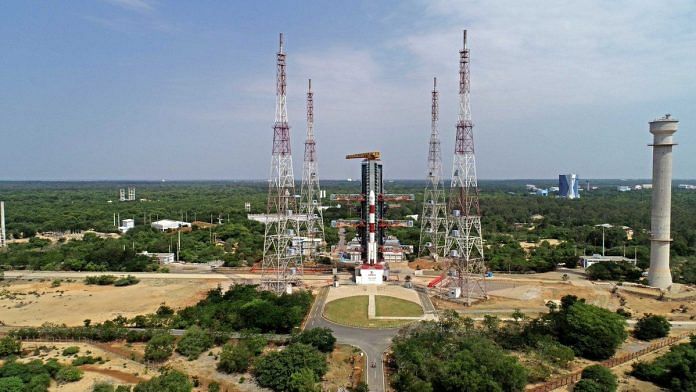New Delhi: The Indian Space Research Organisation (ISRO) said Wednesday that preparations for the launch of its solar mission, Aditya-L1, were on course.
The space agency posted on X: “The preparations for the launch are progressing. The Launch Rehearsal – Vehicle Internal Checks are completed.”
ISRO also shared photos of its launch vehicle that will put in space Aditya-L1, the first space-based Indian mission to study the Sun.
PSLV-C57/Aditya-L1 Mission:
The preparations for the launch are progressing.
The Launch Rehearsal – Vehicle Internal Checks are completed.
Images and Media Registration Link https://t.co/V44U6X2L76 #AdityaL1 pic.twitter.com/jRqdo9E6oM
— ISRO (@isro) August 30, 2023
Aditya-L1 is poised for take-off on 2 September at 11.50 hours. The spacecraft will be placed in a halo orbit around the Lagrange Point 1 (L1) of the Sun-Earth system, which is about 1.5 million kilometres from the Earth.
Lagrange points are positions in space where objects sent tend to stay there since the gravitational pull of two large masses (in this case the Sun and the Earth) equals the centripetal force required for a small object to move with them. These points in space can be used by spacecraft to reduce fuel consumption needed to remain in position.
ISRO has said a satellite in the halo orbit around the L1 point has the major advantage of continuously viewing the Sun without any occultation or eclipses. “This will provide a greater advantage of observing the solar activities and its effect on space weather in real time,” the agency put out on its website.
The spacecraft carries seven payloads to observe the photosphere, chromosphere and the outermost layers of the Sun (the corona) using electromagnetic and particle and magnetic field detectors.
“Using the special vantage point L1, four payloads directly view the Sun and the remaining three payloads carry out in-situ studies of particles and fields at the Lagrange point L1, thus providing important scientific studies of the propagatory effect of solar dynamics in the interplanetary medium,” ISRO stated.
Aiming for the Sun after a historic moon landing, ISRO says the payloads are expected to provide crucial information to understand the problem of coronal heating, coronal mass ejection, pre-flare and flare activities and their characteristics, the dynamics of space weather, propagation of particle and fields etc.
Also read: Chandrayaan-3 landing done. It’s now over to Pragyan Rover for next phase of Moon mission






